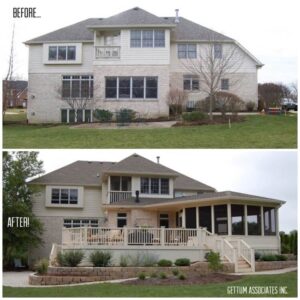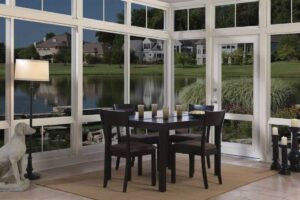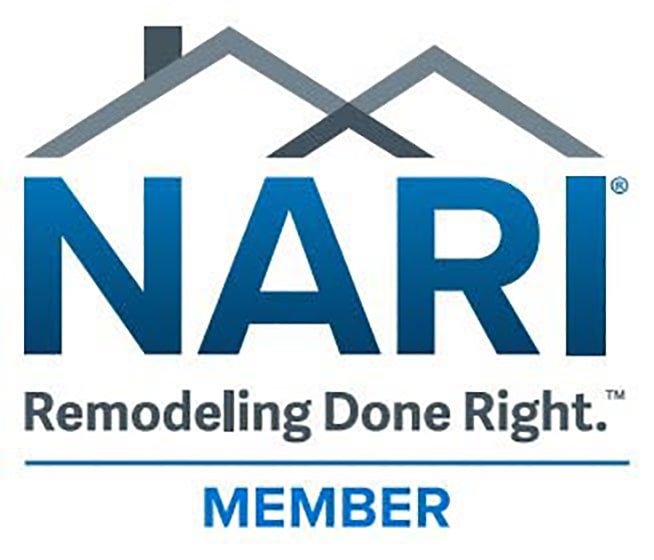As a popular room for remodeling, the bathroom in your home is one of the most-used rooms in your house, and it’s important to create a comfortable and ergonomic space. If you or your parents are reaching an age where the threat of falling, reduced mobility, or other physical limitations have become a reality, your bathroom might need an aging in place remodeling plan.
What is Aging in Place Remodeling?
The concept of aging in place design is meant to enhance the safety, accessibility, and accommodation for individuals living at home. Moving into an assisted living facility is a step many people don’t want to be forced into. Remodeling via aging in place updates can have a positive impact on a person’s life whether it’s you, a family member, or a friend.
The American Association of Retired People (AARP) explains:
“Aging in Place” is simply a matter of preserving the ability for people to remain in their home or neighborhood as long as possible.”
Aging in place remodeling often features changes to the architecture of a room to accommodate a wheelchair, as well as a variety of safety features like non-slip floors and hand-rails. These features can become part of any size bathroom remodel from a minor update to a full renovation with a totally gutted bathroom.
Why is aging in place important? According to the U.S. Department of Housing and Urban Development:
“In the coming decades… aging of the population presents a number of challenges and unanswered questions, including where people will live and how they will obtain the support and care they will need as they age while retaining as much independence as possible.”
When you remodel a bathroom, it’s important to consider its functionality and its appearance, and installing aging in place features can create some challenges, particularly if you’re working with a small space.
Common Aging in Place Features in Today’s Bathrooms
One estimate suggests that around 70% of homeowners who plan a remodeling project are looking at including some aging in place features for their own needs or for the needs of their parents. With that in mind, you may decide on any number of features to include in your renovation.
Before you Begin: Consider the future.
You may have just a few aging in place features in mind for your remodeling project, but remember that your needs today may change in the future. If you’re thinking about installing features for someone who uses a walker (such as handrails around the toilet), will that need to turn into wheelchair access in the future?
A bathroom remodeling project today should offer you years – and likely decades – of use, so it’s important to think about the future and your family’s changing needs. With the future in mind, here are some of the common features you’ll see in a bathroom that’s been remodeled for mobility and access.
Walk-in tub: These bathtubs have a door that opens and closes for entry. The user opens the door to the tub, steps in, and then sits down while the tub fills. These bathtubs once looked quite antiseptic and medical in nature, but aging-in-place manufacturers have listened to homeowners who don’t want a bathroom that looks like it came straight out of a hospital.
Wheelchair-accessible toilet: You’ve seen the spacious toilets in public bathrooms meant for access for those in wheelchairs, and you’ll see the same features in homes including elevated seats, hand rails, and space for a wheelchair to access the area. Bathrooms that will see use by someone in a wheelchair also often need a modification to the door for width.
Walk-in shower: An alternative to the walk-in tub is a walk-in shower, which can be outfitted with a seat and offers easy access without the user having to lift a leg to access the shower area. Walk-in showers are not only aging-in-place friendly, but they’re also a trendy addition to bathrooms today, so it’s possible to install a walk-in shower that blends in beautifully.
Other features that may also fit into your aging in place remodel include:
- Non-slip floors
- Handrails
- Lever-style handles & fixtures
- Bright lighting
- Magnified mirrors
Help from a contractor who is experienced in aging-in-place remodeling is important because it helps ensure your project abides by building codes and offers the best features for your particular needs.
Plan Your Aging in Place Remodel with Gettum Associates
If you’re searching for a contractor in the Indianapolis area, contact Gettum Associates, Inc., and make sure to download our free eBook: Seven Questions to Ask When Choosing a Remodeler in the Indianapolis Area.















